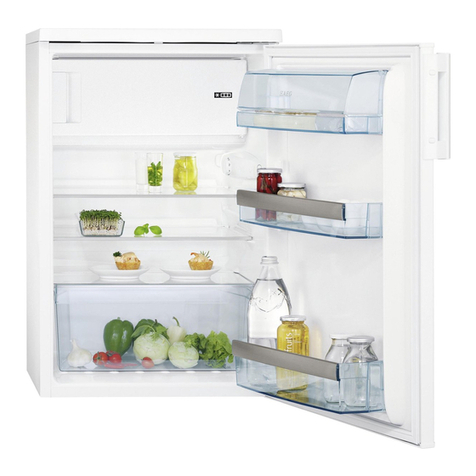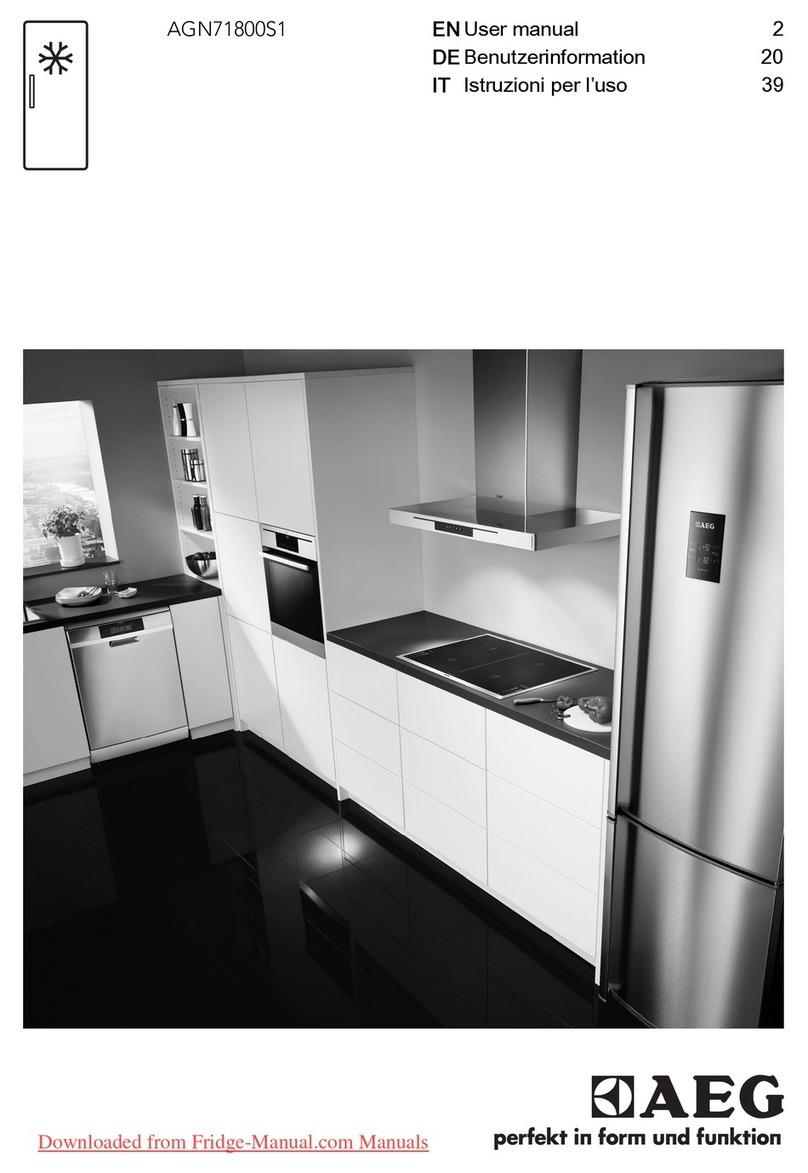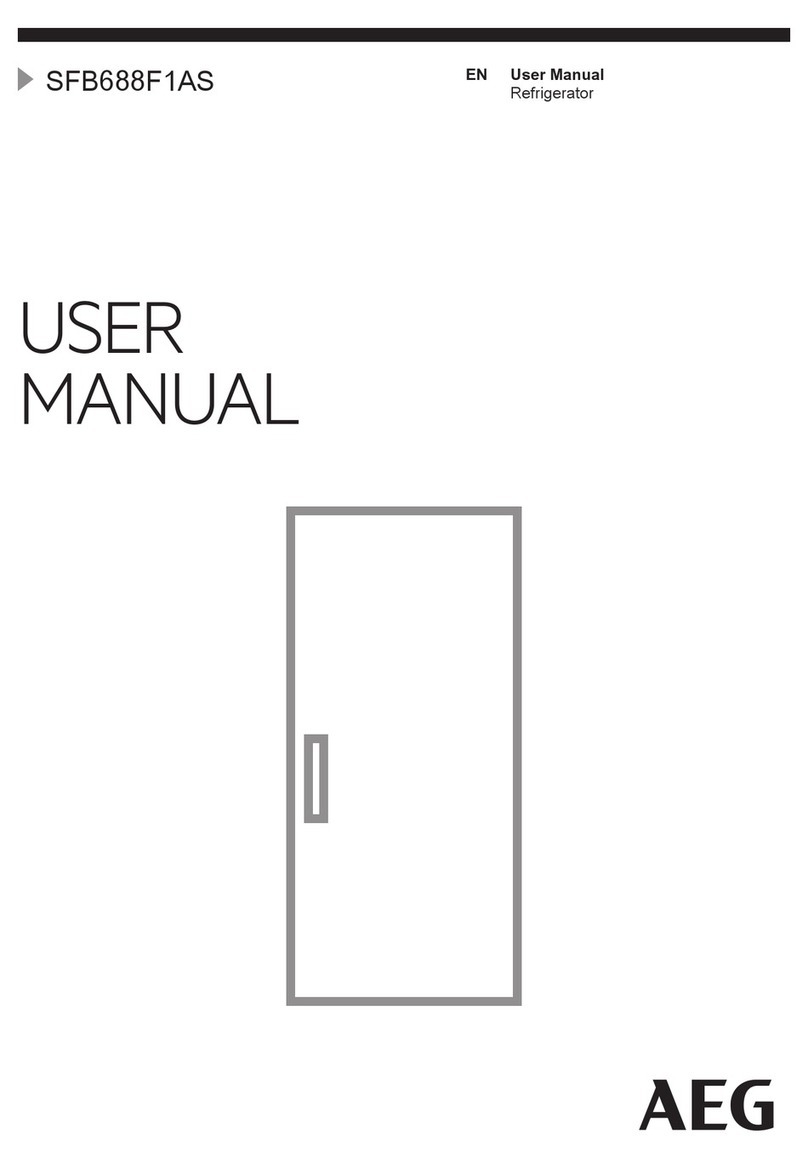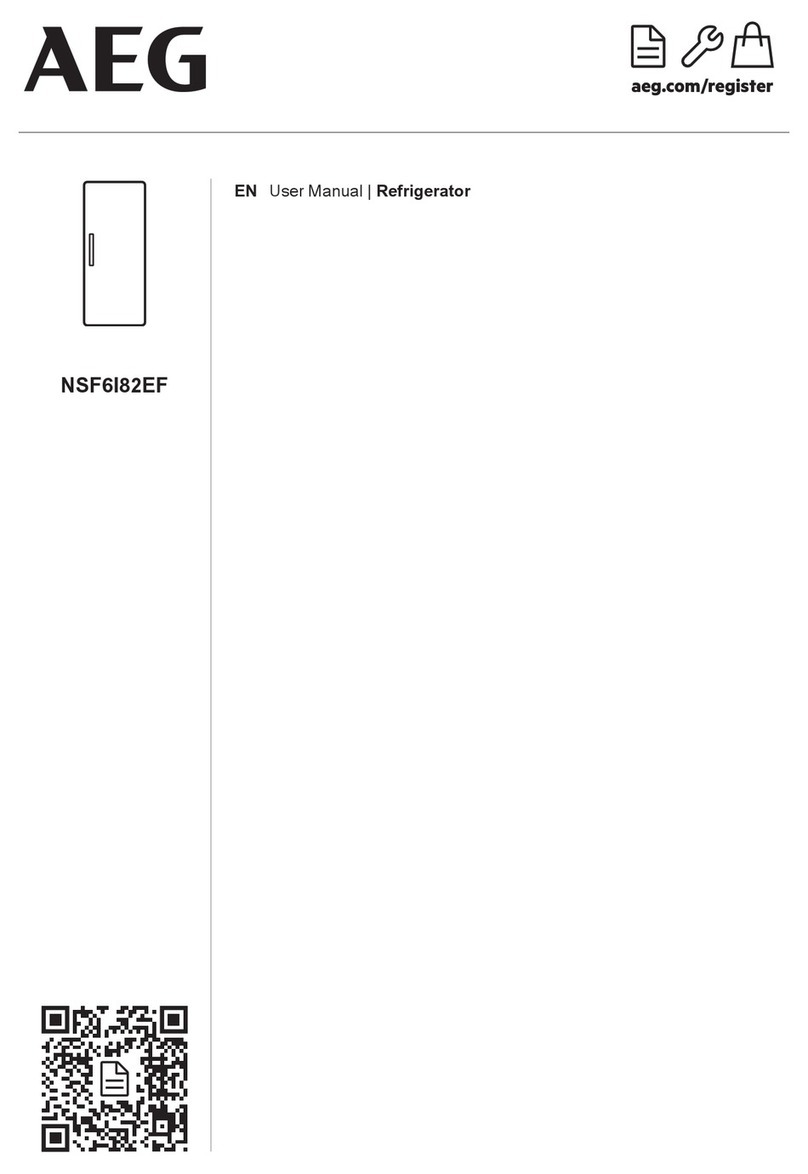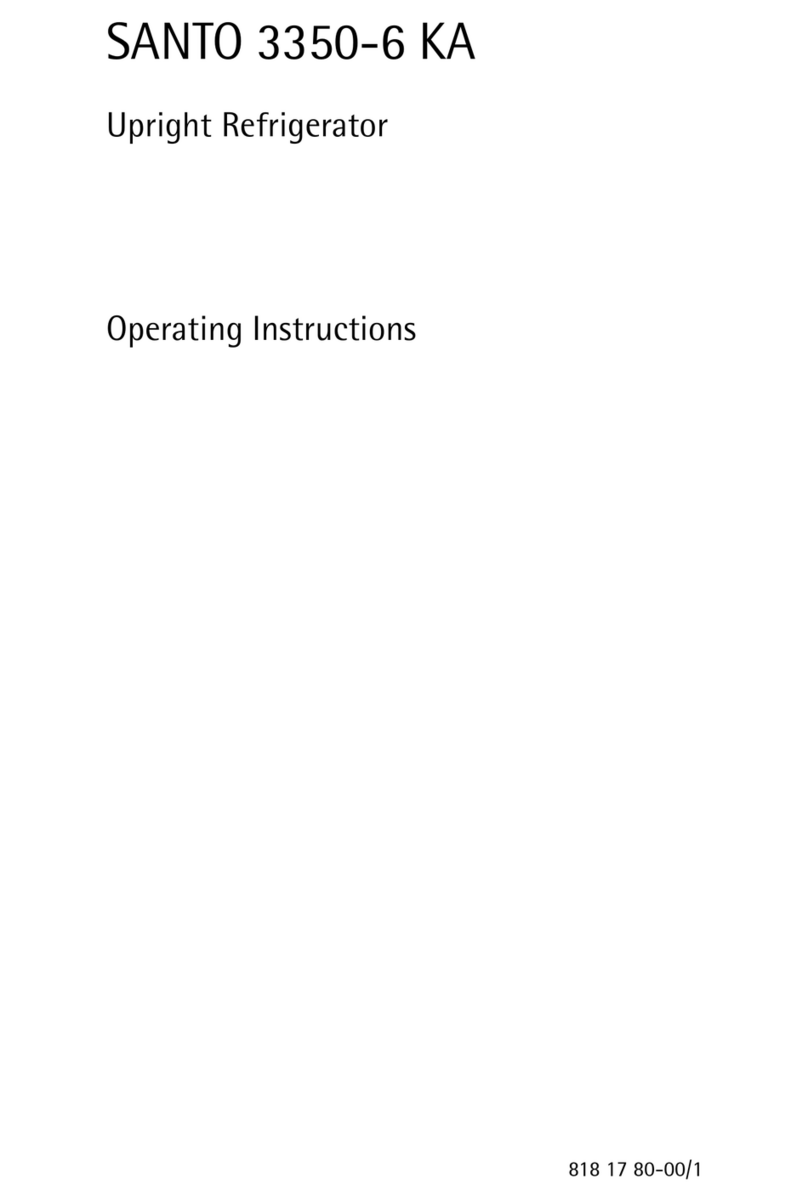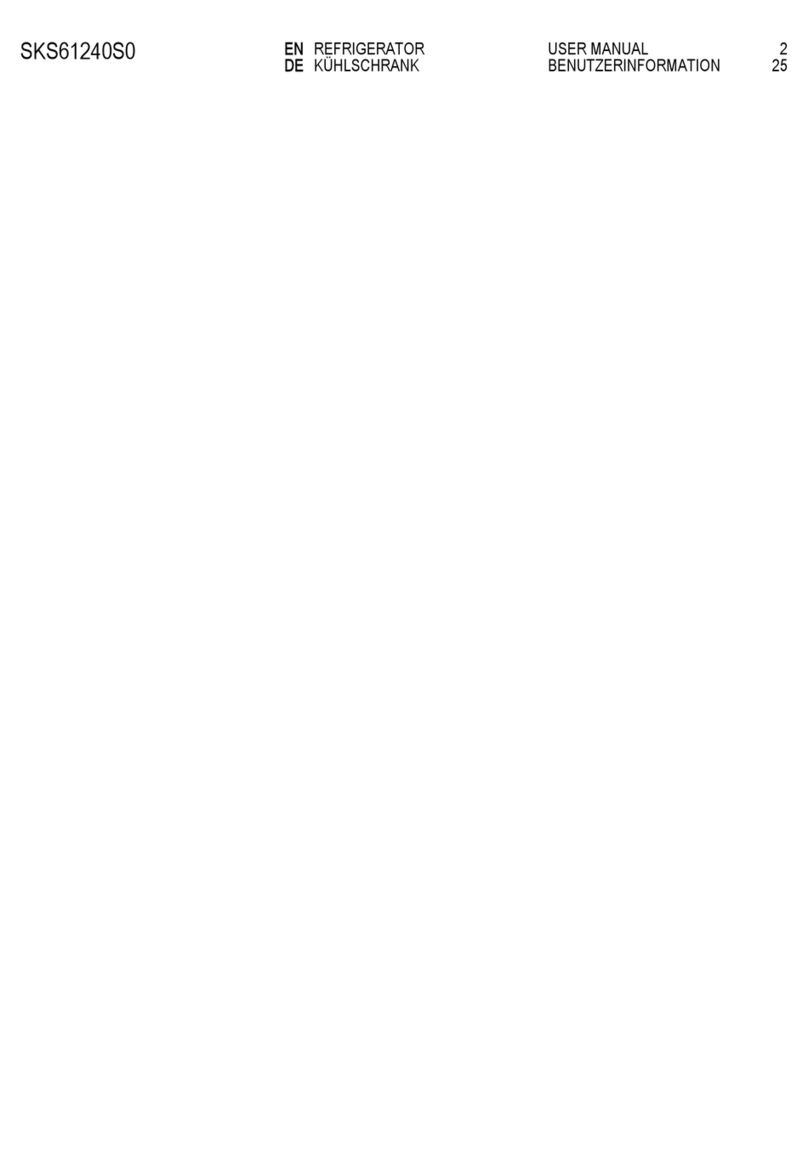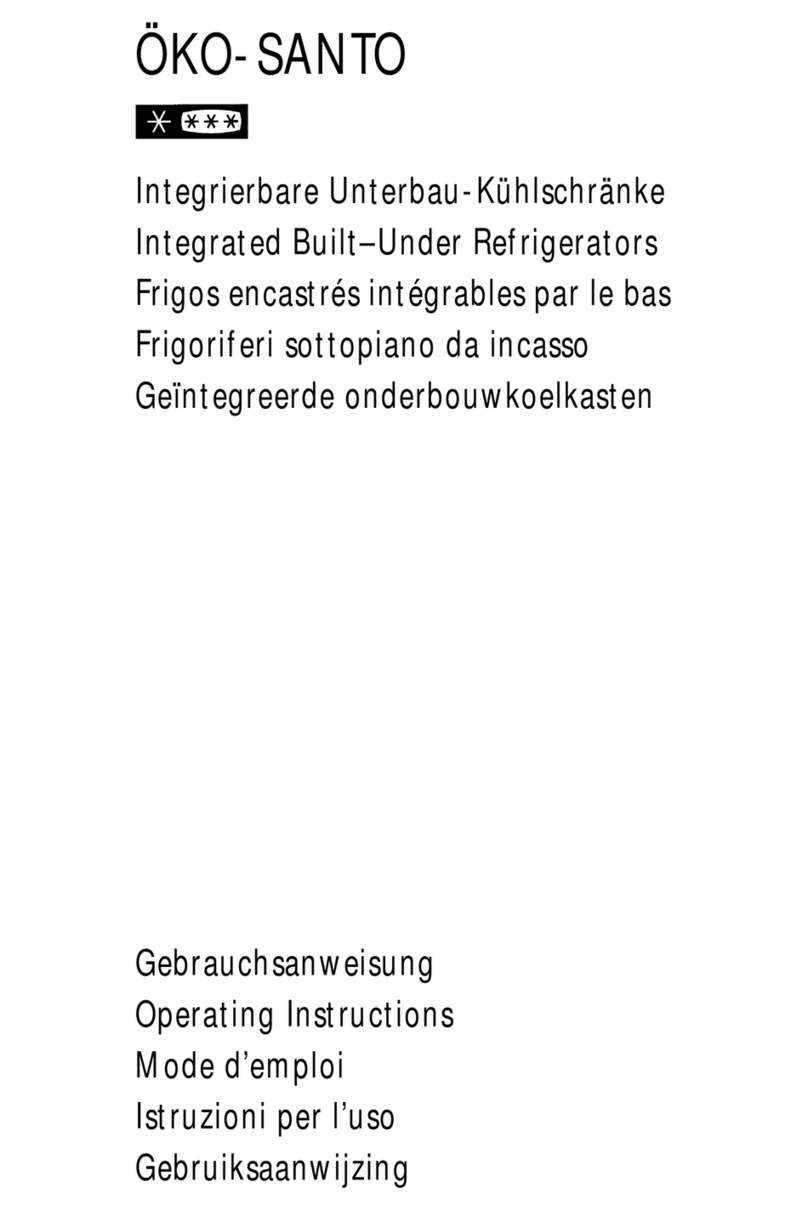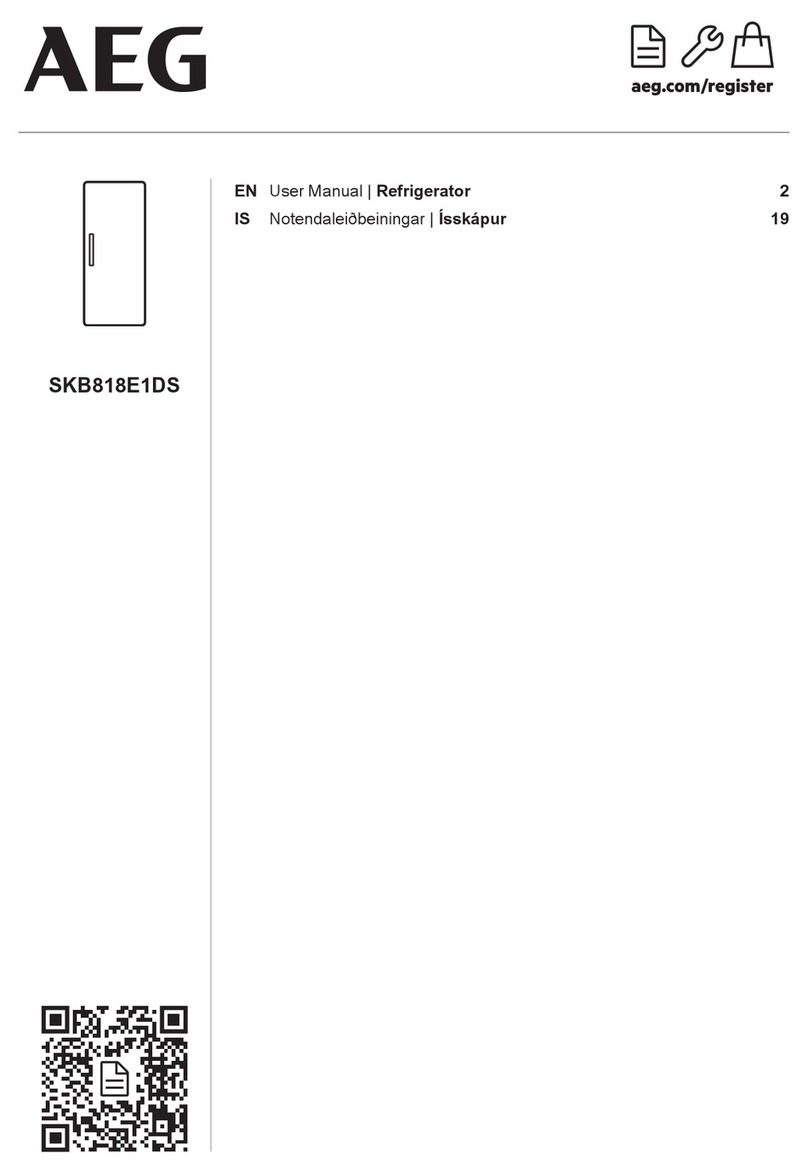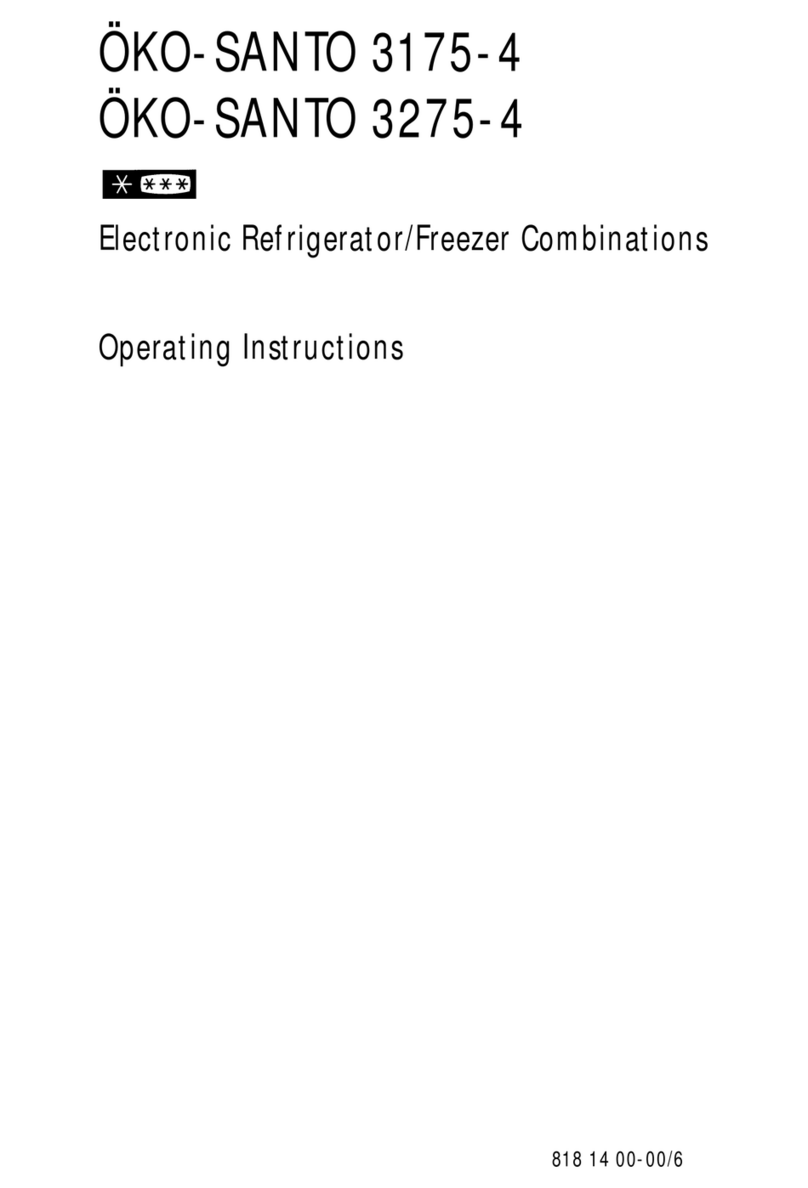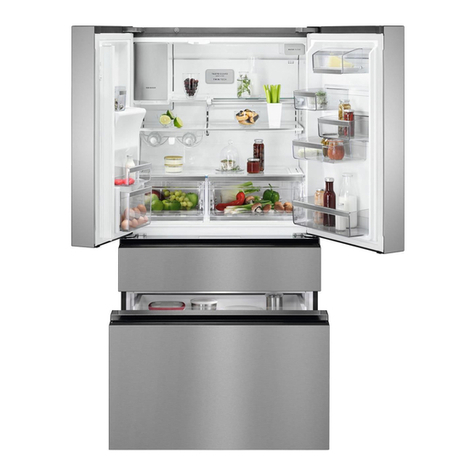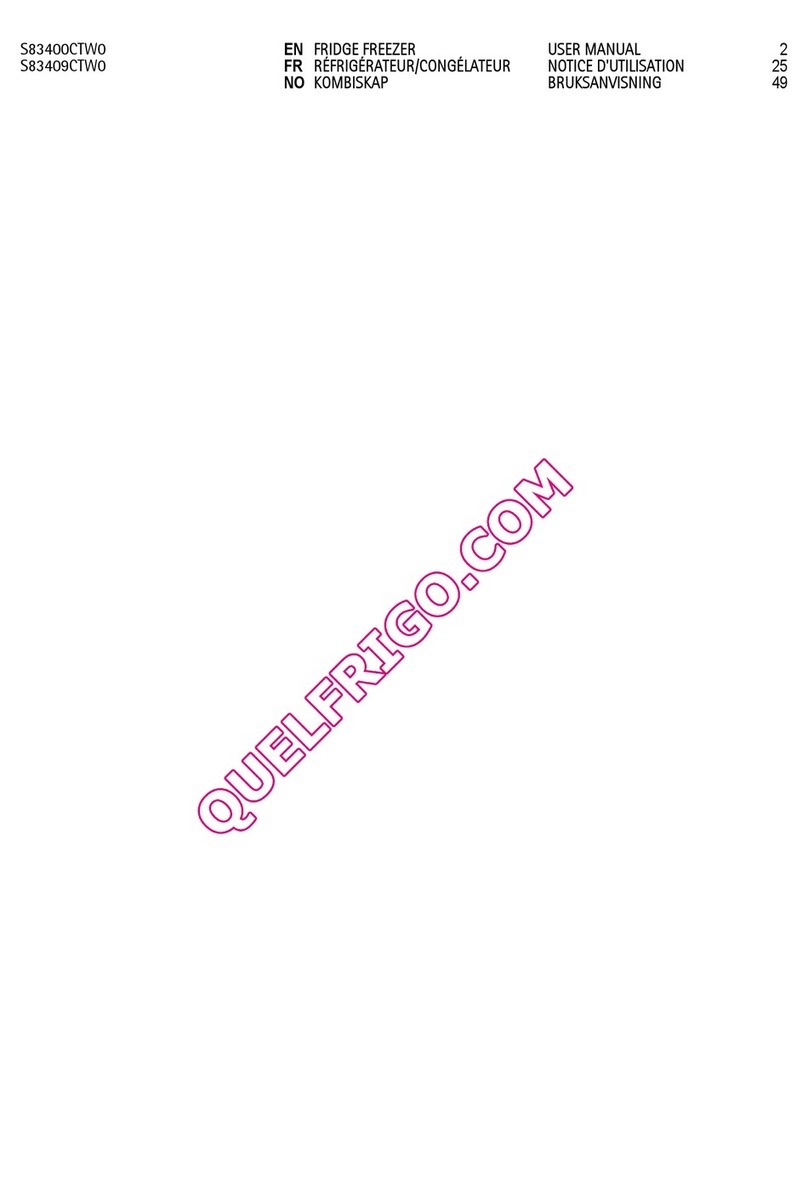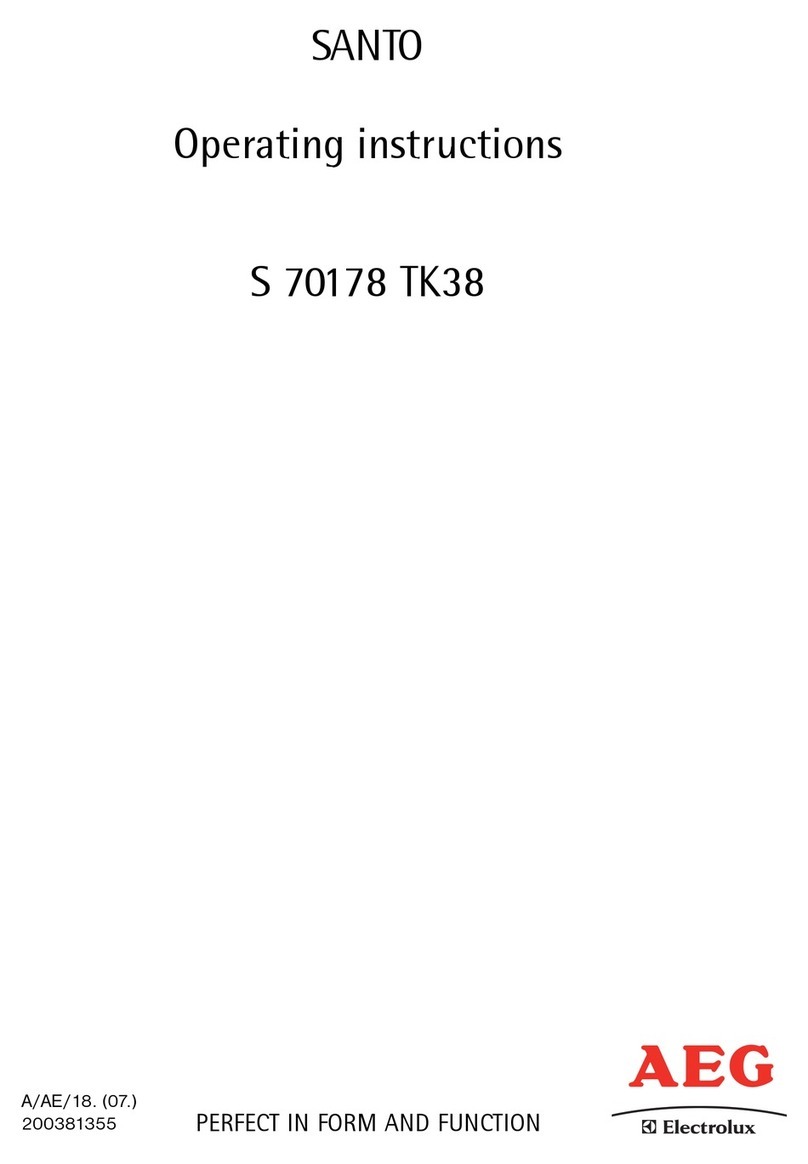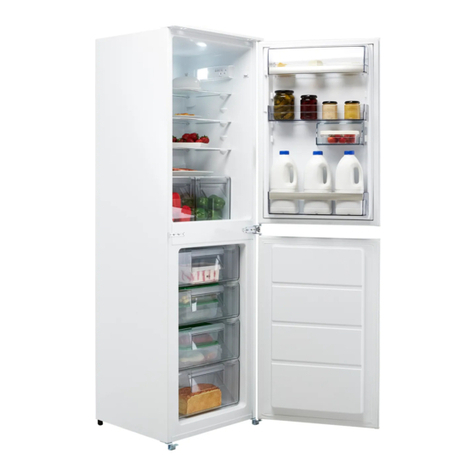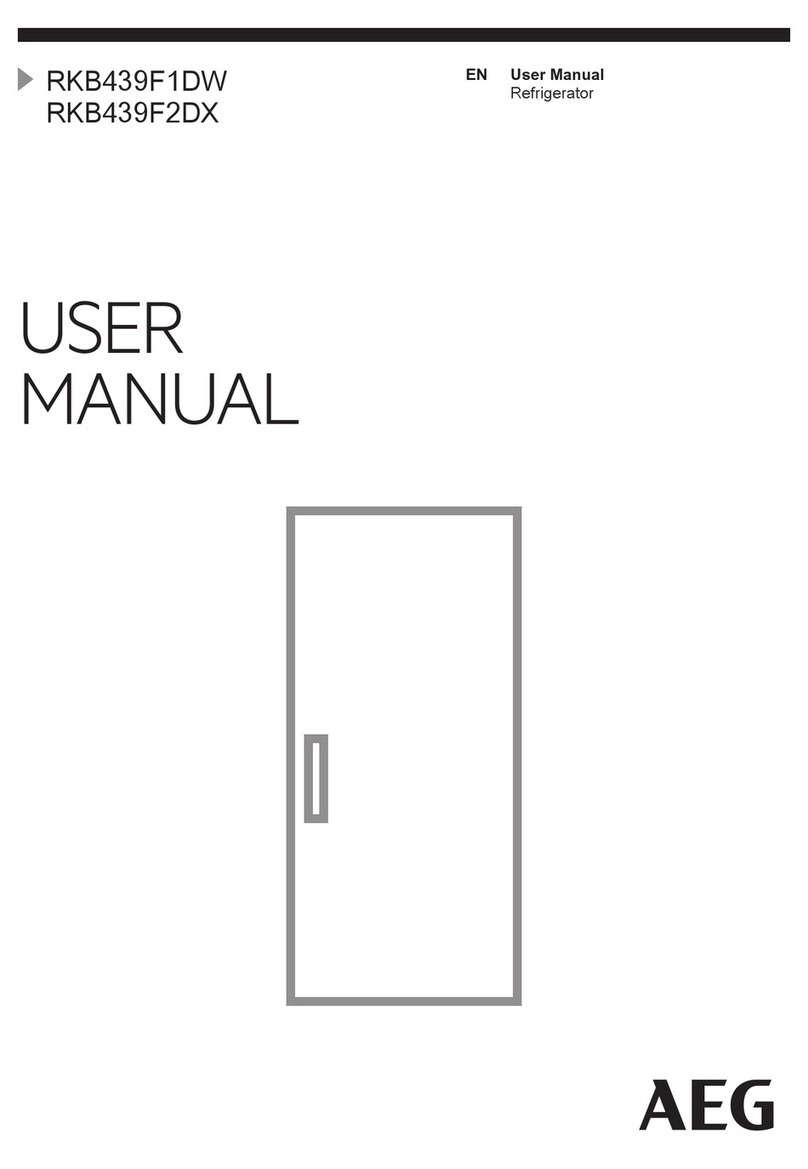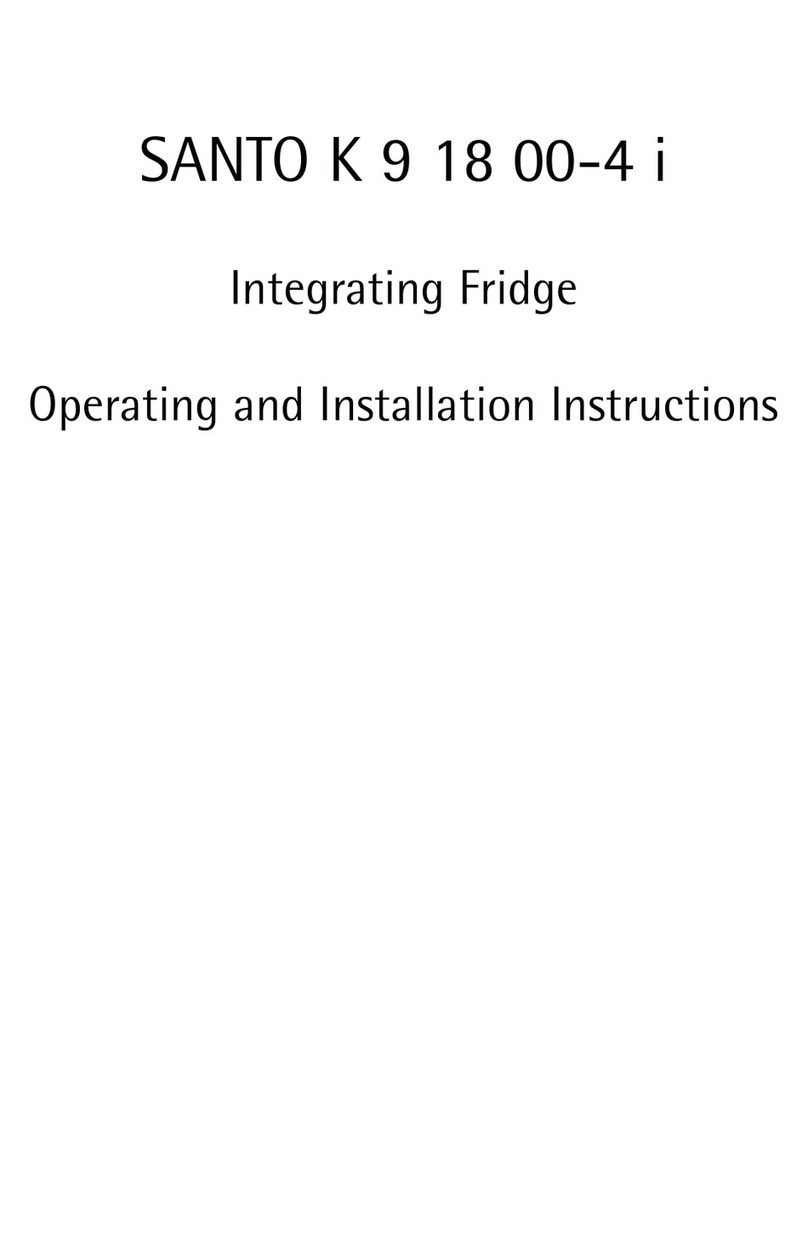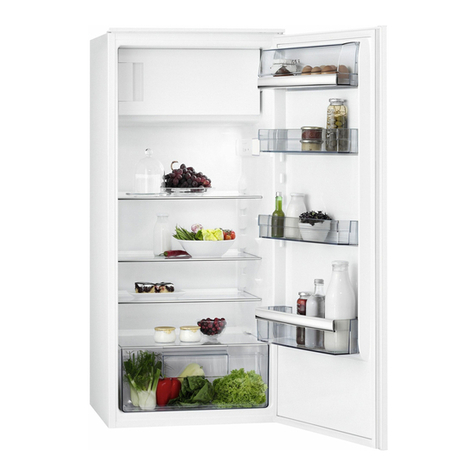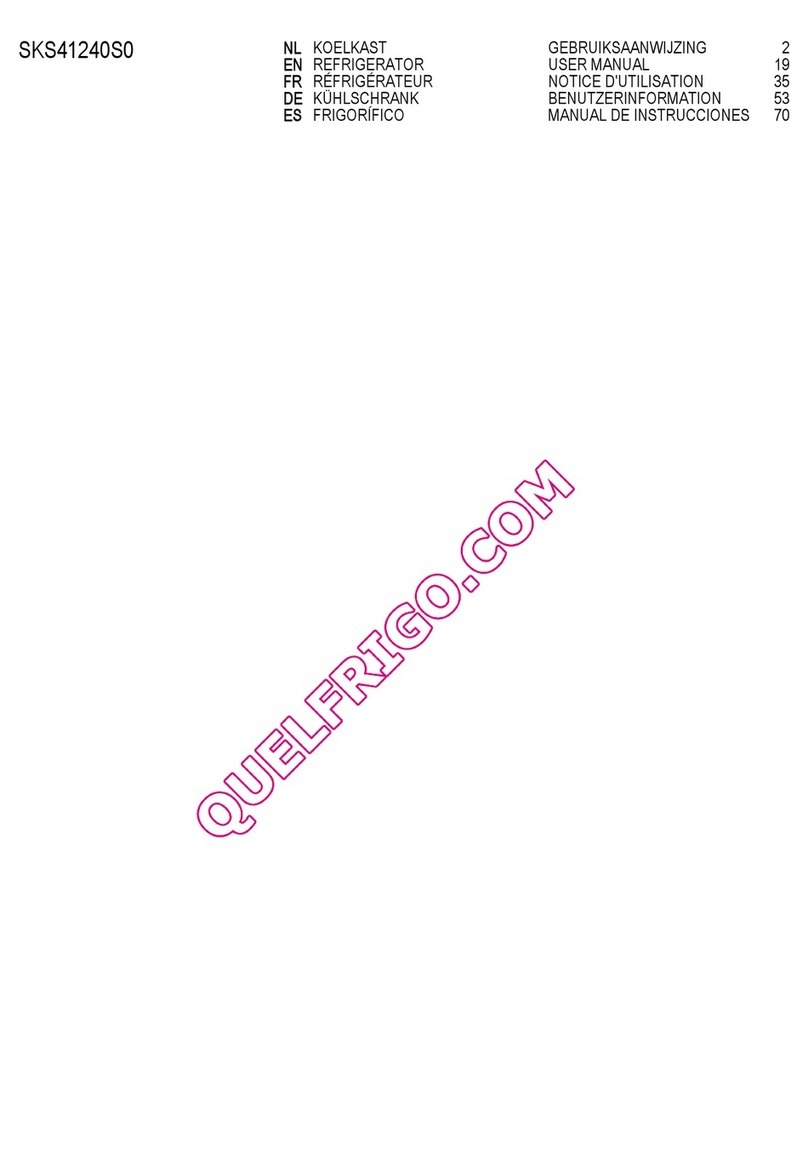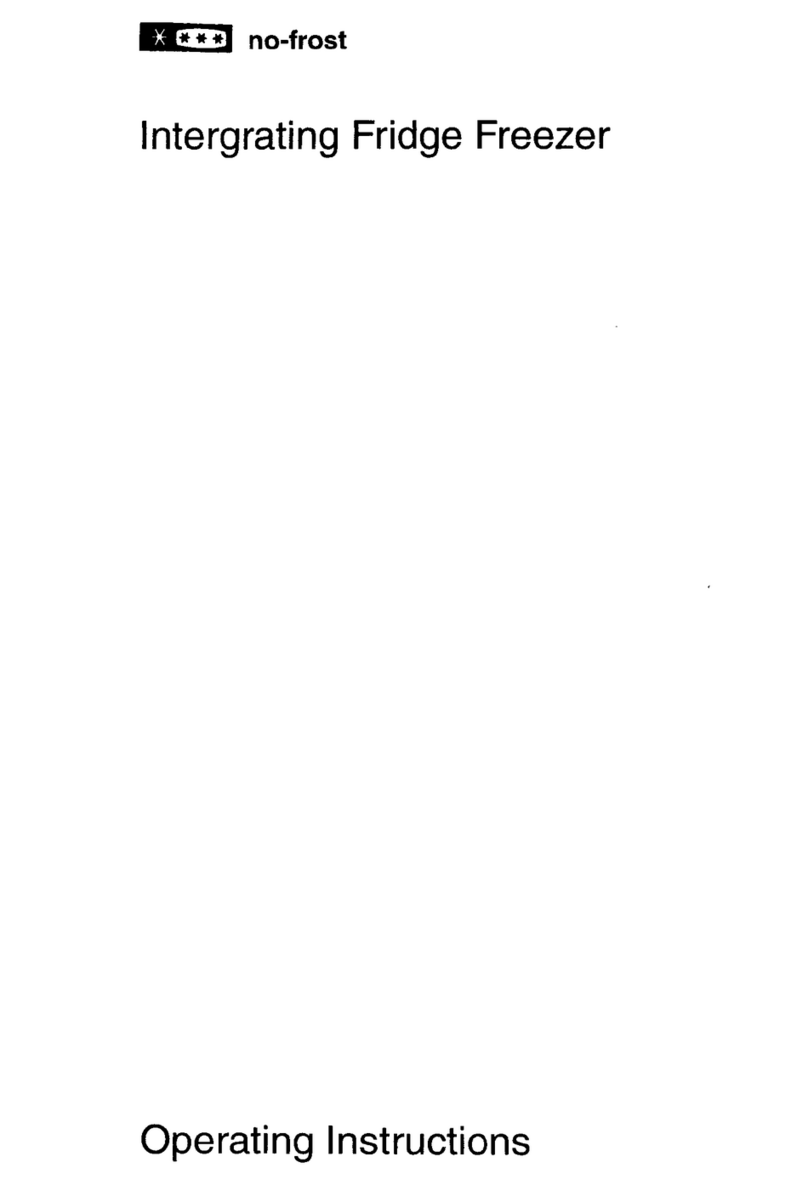14
GB
Adjusting the storage racks
If you want to adjust the distance between the stor-
age racks to accommodate taller containers, you
should pull the storage rack slightly forwards until it
can be swivelled upwards or downwards and re-
moved. To insert at another level, please proceed in
the reverse sequence.
Icemaking
Fill the ice-tray 3/4full with cold water, place it in the
icemaking compartment, and allow it to freeze. The
ice-cubes can be easily loosened by twisting the
icetray or by holding it briefly under running water.
Never loosen the frozen-on ice-tray with sharp or
pointed objects, since you may damage the refrig-
erating circuit.
Defrosting
Fig. 8
The appliance should be defrosted whenever a frost
layer of around 4 mm builds on the evaporator.
Before defrosting, empty the icemaking compart-
ment, ensuring that the thaw water collector is
below the evaporator.
The defrosting knob is located at the centre of the
regulator knob (Fig. 8, A). This is pressed in until it
engages. The setting of the temperature regulator
thereby remains unchanged. Do not forget to re-
move the thaw water and to dry the evaporator.
You can accelerate the defrosting process by plac-
ing a bowl of warm water inside the appliance and
keeping the door closed.
For safety reasons, no additional heat sources, such
as e. g. an electric heater or the like, should be used
during defrosting. When the frost layer has melted,
wipe the surfaces well dry. After the defrosting pro-
cess, the refrigerator switches on automatically.
Cleaning and care
Your refrigerator should be cleaned at regular inter-
vals. This is best done when it is empty or contains
little food.
During cleaning, your refrigerator should basically be
disconnected (unplugged) from the electricity supply.
Some organic solvents as well as essential oils (e. g.
juice from lemon and orange peel, butyric acid) at-
tack the plastic parts. Do not forget that, even in the
refrigerator, food stored too long may spoil. To pre-
vent any odours from forming, the contents should
therefore be checked from time to time (including
accessories) and thoroughly cleaned with lukewarm
water to which a mild detergent can be added. Fi-
nalIy, wash with clean water and wipe dry. After
cleaning, promptly restart your appliance.
When not in use
If your refrigerator is to remain unused for any length
of time, it must be disconnected (unplugged) from
the electricity supply. Remove all refrigerated and
deep-frozen packages as well as ice-trays, clean
the refrigerator compartment thoroughly, and leave
the door ajar to prevent any odours from forming.
Internal lighting
Light bulb data: 220 V, 12 W
E 14 socket (never use a bulb of more than 12 W).
Changing the light bulb:
Unplug or otherwise disconnect the appliance
from the mains supply (e. g. by removing the fuse).
Unscrew the light bulb from below and replace with
a new one.
Faults and servicing
To maintain the safety of your appliance, you should
only have repairs, especially on live parts, performed
by a trained electrician. In the event of a fault, please
contact your retailer or the service centre direct.
Before approaching the service centre, check
whether the plug socket is energized (connect light
bulb where necessary). Power supply faults can be
rectified by your electrician.
If your refrigerator has a fault, please notify the near-
est service centre promptly. To avoid unnecessary
journeys and costs, please quote
- the model designation,
- E-number and
- F-number of your refrigerator.
These data are indicated on the rating plate inside
your appliance on the LH side.
N. B.! Unjustified after-sales service calls must be
paid for even during the guarantee period.
